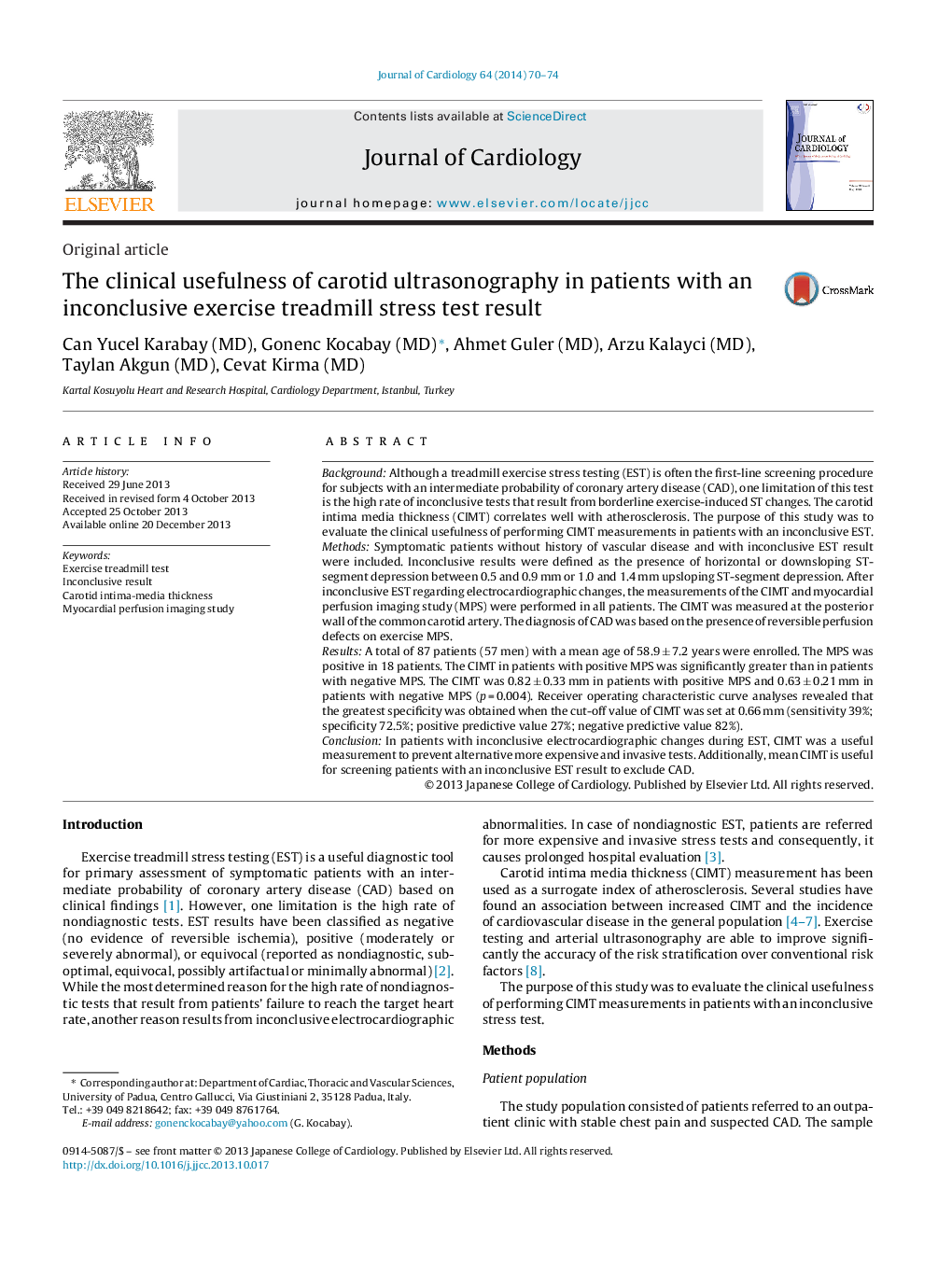| Article ID | Journal | Published Year | Pages | File Type |
|---|---|---|---|---|
| 2963208 | Journal of Cardiology | 2014 | 5 Pages |
BackgroundAlthough a treadmill exercise stress testing (EST) is often the first-line screening procedure for subjects with an intermediate probability of coronary artery disease (CAD), one limitation of this test is the high rate of inconclusive tests that result from borderline exercise-induced ST changes. The carotid intima media thickness (CIMT) correlates well with atherosclerosis. The purpose of this study was to evaluate the clinical usefulness of performing CIMT measurements in patients with an inconclusive EST.MethodsSymptomatic patients without history of vascular disease and with inconclusive EST result were included. Inconclusive results were defined as the presence of horizontal or downsloping ST-segment depression between 0.5 and 0.9 mm or 1.0 and 1.4 mm upsloping ST-segment depression. After inconclusive EST regarding electrocardiographic changes, the measurements of the CIMT and myocardial perfusion imaging study (MPS) were performed in all patients. The CIMT was measured at the posterior wall of the common carotid artery. The diagnosis of CAD was based on the presence of reversible perfusion defects on exercise MPS.ResultsA total of 87 patients (57 men) with a mean age of 58.9 ± 7.2 years were enrolled. The MPS was positive in 18 patients. The CIMT in patients with positive MPS was significantly greater than in patients with negative MPS. The CIMT was 0.82 ± 0.33 mm in patients with positive MPS and 0.63 ± 0.21 mm in patients with negative MPS (p = 0.004). Receiver operating characteristic curve analyses revealed that the greatest specificity was obtained when the cut-off value of CIMT was set at 0.66 mm (sensitivity 39%; specificity 72.5%; positive predictive value 27%; negative predictive value 82%).ConclusionIn patients with inconclusive electrocardiographic changes during EST, CIMT was a useful measurement to prevent alternative more expensive and invasive tests. Additionally, mean CIMT is useful for screening patients with an inconclusive EST result to exclude CAD.
